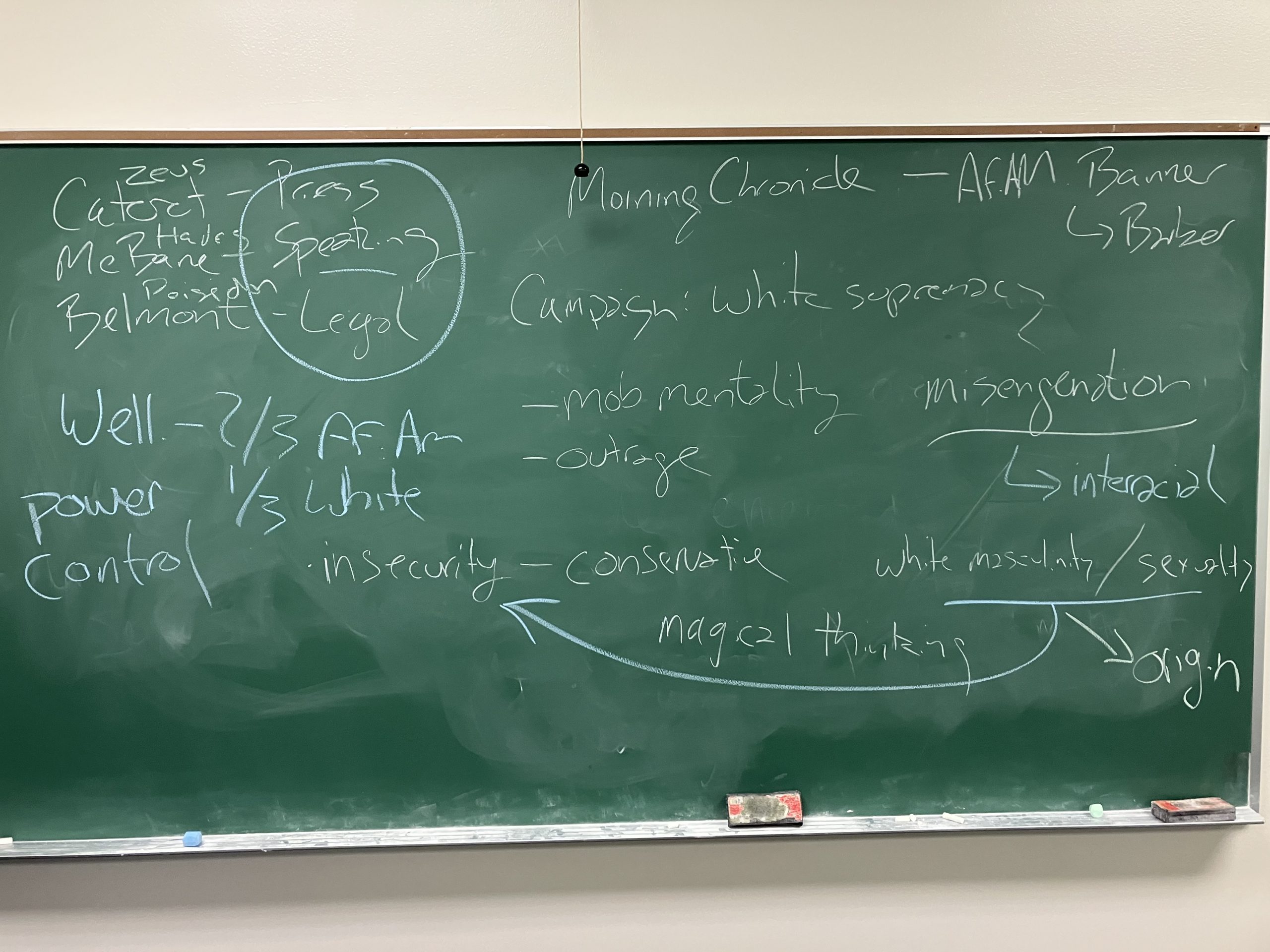The Marrow of Tradition: Literary Analysis

Before we begin reading the novel, I have a discussion with the students about the concept of “hard history” and the novel’s use of the “N” word. We begin this conversation with a statement that I provide on the syllabus:

We are going to read, discuss, and write about some difficult and disturbing events in the history of Wilmington and the United States. Even though some of these moments are fictionalized, they are all solidly based in verifiable facts and lived experiences. As scholars of this era, it is essential that we face this history head-on, as uncomfortable as that may be. Remember: We did not cause these events and their legacy, but we did inherit them. In rendering his conception of the 1898 Wilmington Massacre, Charles W. Chesnutt at times uses the ‘N’ word in his book The Marrow of Tradition. We will not speak or write this word during our Canvas discussions or essays. To do so gives this slur unnecessary and offensive life. As Dr. Koritha Mitchell, an English professor at Ohio St. University, has perfectly expressed: We are cultural, historical, and textual critics. We are not re-enactors. If you quote a passage in Canvas that contains this slur, please just say ‘N’ or ‘Ns’ instead. Doing so does not erase or sanitize history; rather, it demonstrates respect and understanding for the present.
Students readily understand these points, and I have not had any issues with either one when I’ve taught this course.
During this conversation, I note that Chesnutt often uses an exaggerated nineteenth-century Black dialect for some of his characters. Because this dialect can be a bit difficult to visually understand at first, I encourage the students to read the novel while listening to an audiobook of it as well. (I make it clear to the students, however, that they are to not only listen to the audiobook, but they must also read along as well.) There are several free or trial-versions of the audiobook of The Marrow of Tradition online, and students have found that listening while reading helps them understand the dialogue better. An added benefit of using an audiobook is that the theatrical narration heightens the drama of the novel, which further engages the students.
Our early conversations about The Marrow of Tradition are guided by a straightforward document called “Analyzing and Interpreting Stories,” created by the English Department at the University of Hawaii. This document introduces and explains basic concepts like plot, setting, characters, symbolism, theme, and point of view. These terms then become the lenses through which we discuss the novel.